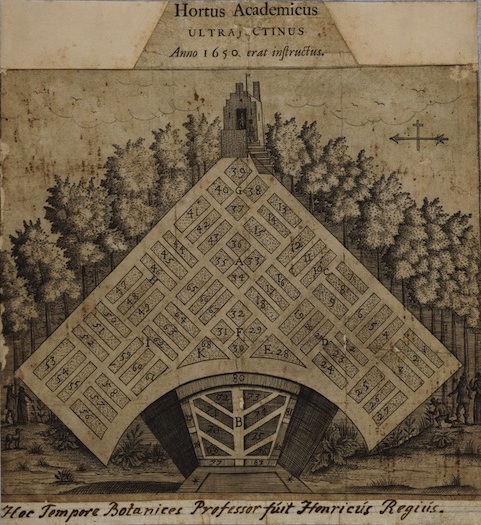A Garden Apart
The relations between Utrecht and medicinal horticulture runs deep. The city’s interest in medical plants reached its apogee in the 1630s. A specialized medical garden, the Hortus Medicus, was established to further cultivate plants and concoct herbal medicines as cures or tinctures to stave off the plague. A pharmacopoaea, Pharmacopoaea Ultrajectina, listing 100s of plant, animal and mineral speices for pharmaceutic use, was published in 1656.
Utrecht’s Oude Hortus has a medical garden made according to the original 16th century Hortus Medicus. This geometric garden, ‘the Regius Tuin’, lies at the southern end of the botanical garden. It replicates the scientific ideals of 17th century and is a precursor to western science’s fetish for parting things. The garden has been compartmentalized into allotments with one allotment for each organ of the human body: lungs, liver, heart, kidneys, brain, stomach, skin, reproductive organs and so on. The plants have also been grouped together that would never be together in their natural ecologies (mediterranean verbena growing alongside indigenous swamp plants, chalk loving garden plants alongside acid loving woody hedges) Interesting then to compare the difference between this rigid separation of organs (and plants that treat these organs) to the Chinese system of medicine which perceives the body as an interconnected system of flows: an organ is not a piece of flesh apart but one of many aspects of bodily functions and contingencies.
It’s also interesting to see the shift from 17th century macro biology to contemporary molecular biology: the ever increasing research in bio-technologies have seen drastic funding cuts for botanical gardens throughout the Netherlands with botanical collections being sold and dissipated as research funding is chanelled more and more into ever more divisible fields of specialization.
